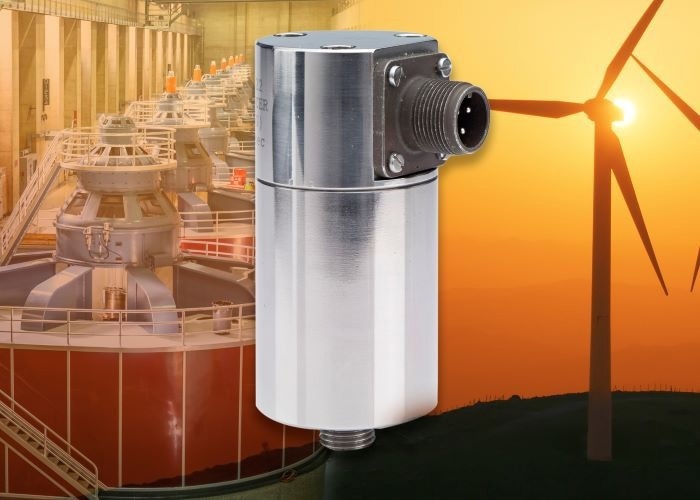The continuing expansion of ‘greener’ energy alternatives such as wind power is underlined by the fact that it’s currently the largest source of renewable energy in the UK. With over 11,000 wind turbines generating a total installed capacity of 30 gigawatts (GW) (2023) its share of the total British Grid Electricity capacity was 30% with a target to increase this to 60% by 2030. The UK government supports this major expansion of offshore capacity, confirming it has leveraged £24 bn of private finance for current and future clean energy projects in the UK.

Image Credit: Sensonics Ltd
One of the key requirements to maintain and optimize the performance of wind turbines is reliable and effective vibration measurement of the slow rotating turbines (typically less than 300 RPM). Condition monitoring specialist recognized the need for a sensor to meet these specific requirements which is one of the reasons why they developed their low frequency VEL/GLF velocity vibration sensor which is ideal for wind energy machinery.
This electro dynamic sensor provides a superior performance compared to piezo-electric devices by combining high measurement sensitivity with a frequency response down to 0.1 Hz. This level of sensitivity, along with excellent noise performance, provides the necessary dynamic range required for detailed analysis of gearbox vibration, so is ideal for measuring velocity vibration on equipment with speeds below 300 RPM. Furthermore, the VEL/GLF has advantages over traditional piezoelectric based velocity vibration sensors which are susceptible to many forms of interference in low frequency applications that can result in spurious readings and alarms.
As a result of its robust design, the VEL/GLF offers high noise immunity due to the low impedance electro dynamic nature of the sensor assembly. In addition to the filtering of high frequency events and since no electronic integration is required, means the design of the sensor is immune to the saturation problems that impair the reliability of other piezoelectric devices.